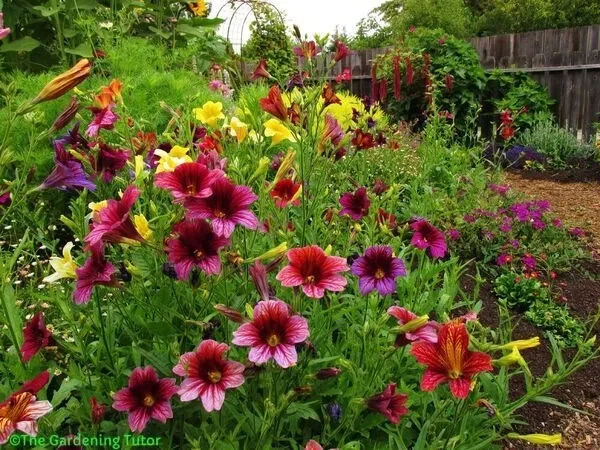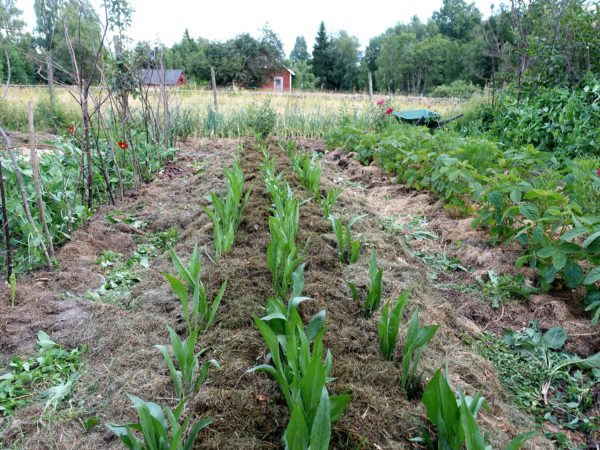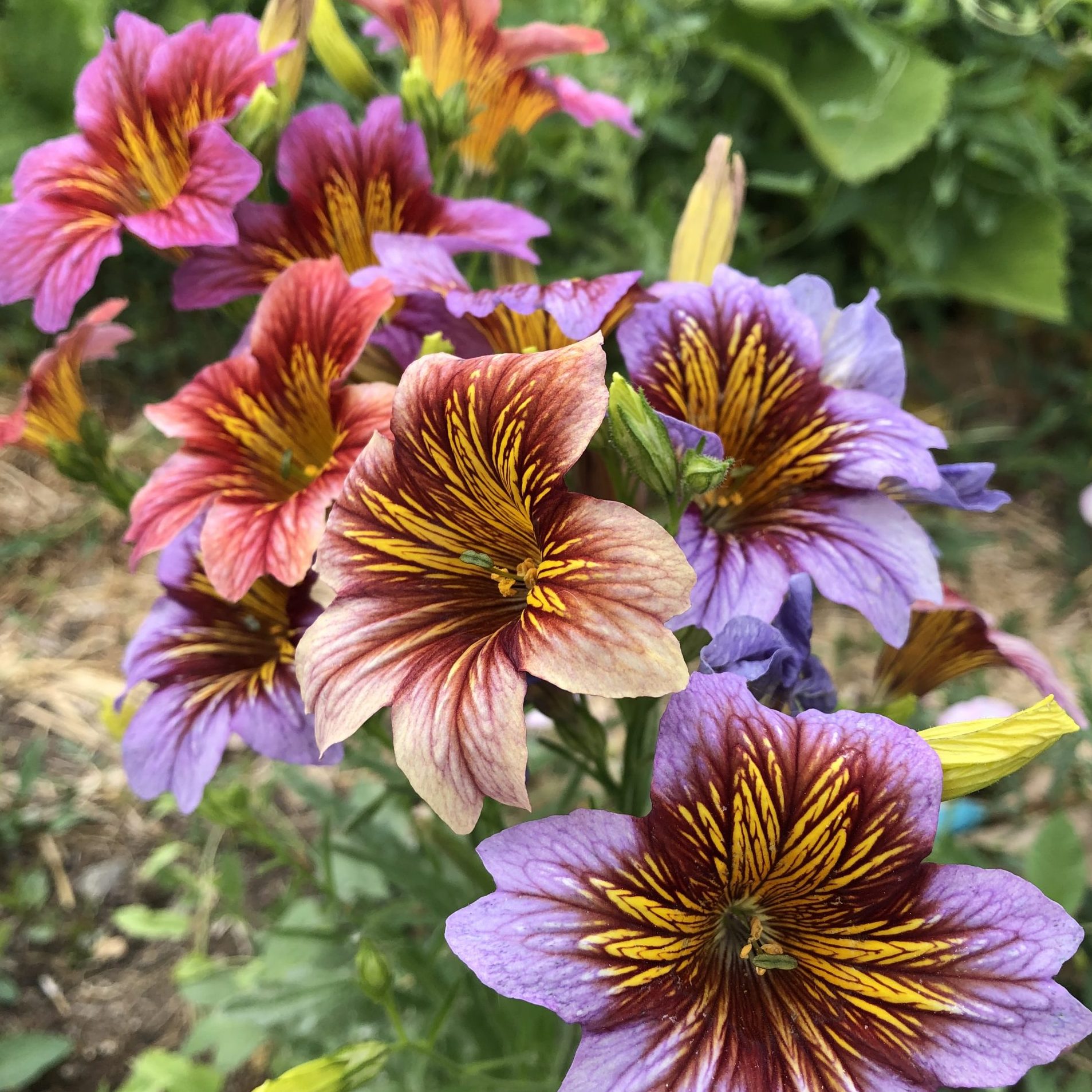For many gardeners, the goal is to cultivate beauty not only for human enjoyment but also to attract pollinators and support local wildlife. One flower that excels at this is Salpiglossis, also known as the “painted tongue” or “stained-glass flower.” This striking plant, native to Chile, boasts vibrant, trumpet-shaped blossoms with intricate veins and colorful throats that can captivate both the eye and pollinators like bees.
Salpiglossis is an easy-to-grow annual suitable for garden beds or containers. It resists deer and rabbit browsing, making it a great choice for a low-maintenance garden, and its flowers are also excellent for cutting.
History and Unique Characteristics of Salpiglossis
Introduced to the global gardening world in the 1820s, Salpiglossis became a treasured plant by the early 1900s. Despite its visual appeal, it never reached the popularity of petunias, mainly due to its breeding challenges. Salpiglossis is self-fertile, meaning its flowers often pollinate themselves before fully opening, which has hindered breeding efforts aimed at improving size and variety.
Growing Salpiglossis from Seed
Growing Salpiglossis from seed is straightforward. Start by sowing the tiny black seeds indoors about 8 weeks before your last frost date, and transplant the seedlings outdoors in late spring after the threat of frost has passed. Alternatively, you can sow the seeds directly into containers once the weather warms up.
While some sources suggest that Salpiglossis seeds need darkness to germinate, they typically sprout within 7-10 days at normal room temperature. Once germinated, move them to a bright location and care for them similarly to petunias or tomatoes. If growing from purchased plants, be sure to prevent overcrowding of the roots by transplanting them into larger pots when necessary. If the plants experience root stress, they may flower prematurely and die young.

Caring for Salpiglossis in the Garden
Once in the garden, Salpiglossis thrives in full sun and well-drained soil. These plants grow tall and may require staking to prevent toppling, especially when their flowers begin to bloom. Consider placing them near a backdrop of pink cosmos, yellow marigolds, or nasturtiums to enhance their vibrant colors and provide contrast.
Positioning your plants so the sun can backlight the flowers will highlight their stained-glass effect, creating a stunning visual display. Container gardening is an excellent way to manage the plant’s size while providing flexibility to move the plants to different locations for viewing.

Summer Care and Pests
During the summer, Salpiglossis grows quickly, but it requires regular watering to keep its roots cool and moist. Mulching with organic materials helps prevent soil drying. Similar to tomatoes, Salpiglossis leaves are covered with fine, hair-like trichomes that deter insects and grazing animals. However, certain pests, like tomato hornworms, may still target the plants.
As Salpiglossis grows taller, staking may become necessary to ensure stability, especially in windy conditions. Regularly deadheading will prolong the blooming period and improve the plant’s overall appearance.

Enjoying the Beauty of Salpiglossis
While Salpiglossis is a relatively short-lived flower, it makes an impressive display during the summer months. It also works well as a cut flower, though its sticky stems can make handling a bit messy. Once the heat of summer begins to take its toll, replace them with other late-blooming plants like asters or chrysanthemums to extend your garden’s color and attract new pollinators.
Whether grown in the garden or in containers, Salpiglossis is a beautiful, pollinator-friendly addition that will bring vibrant color and attract beneficial insects to your space.
